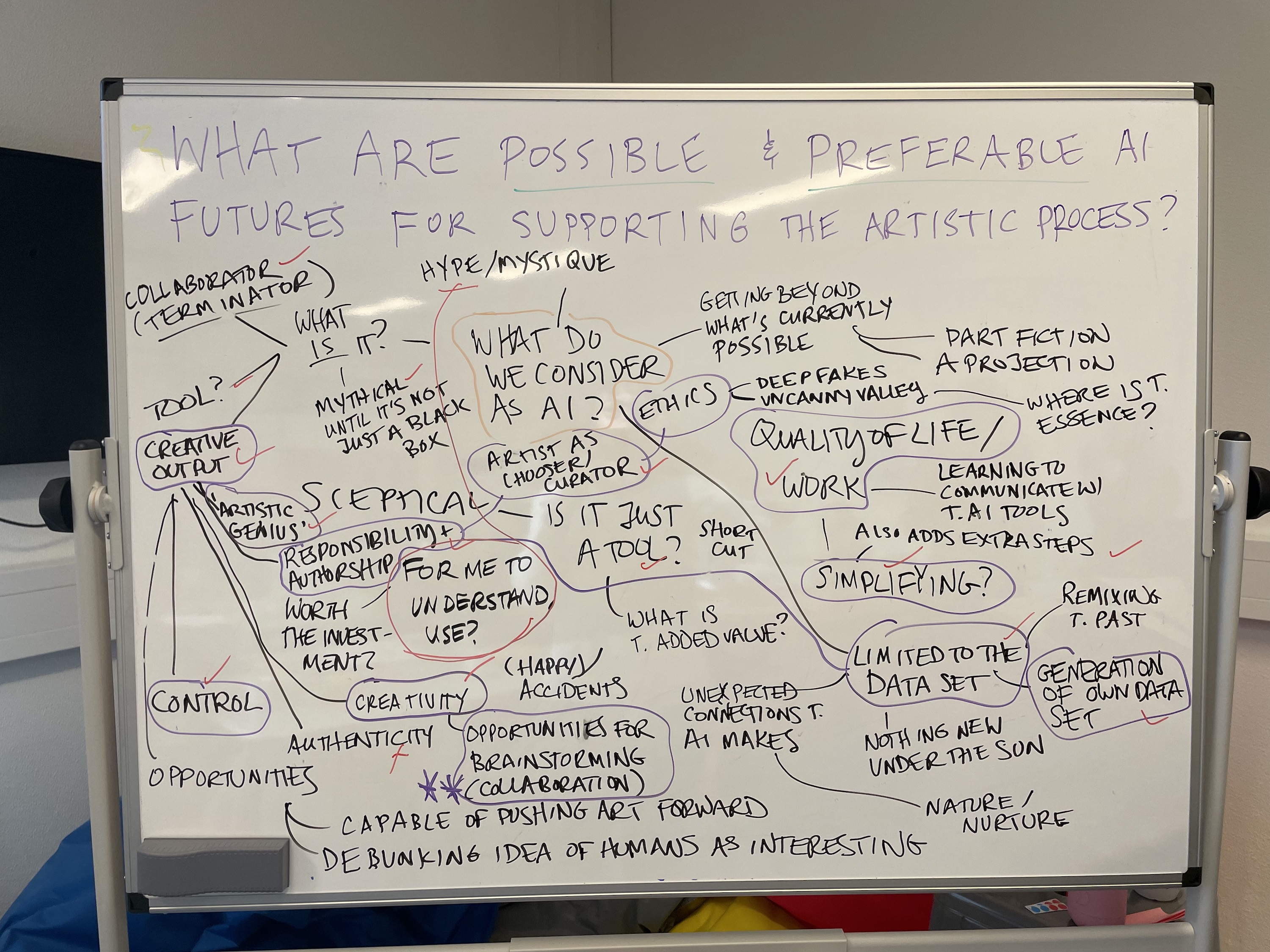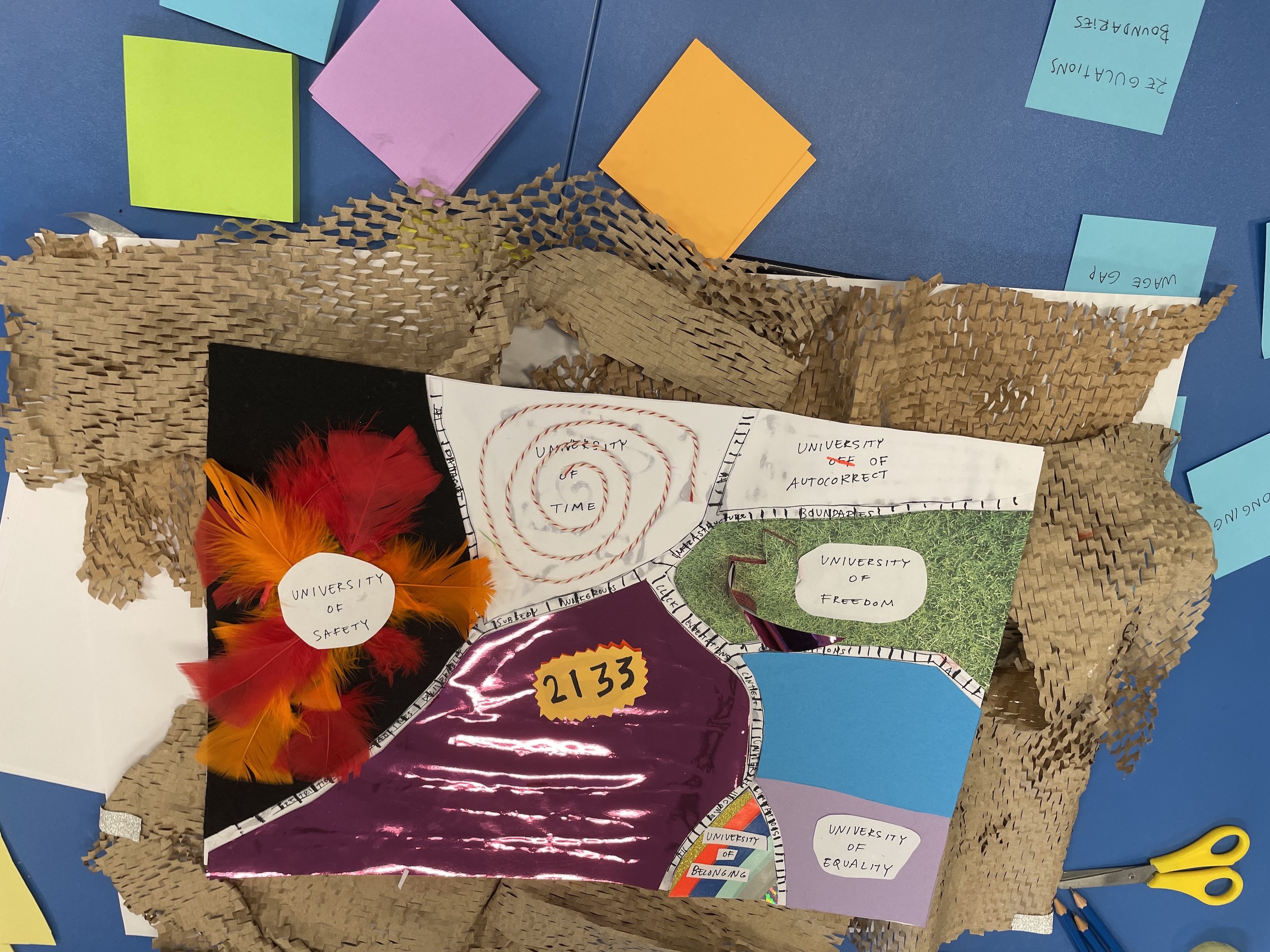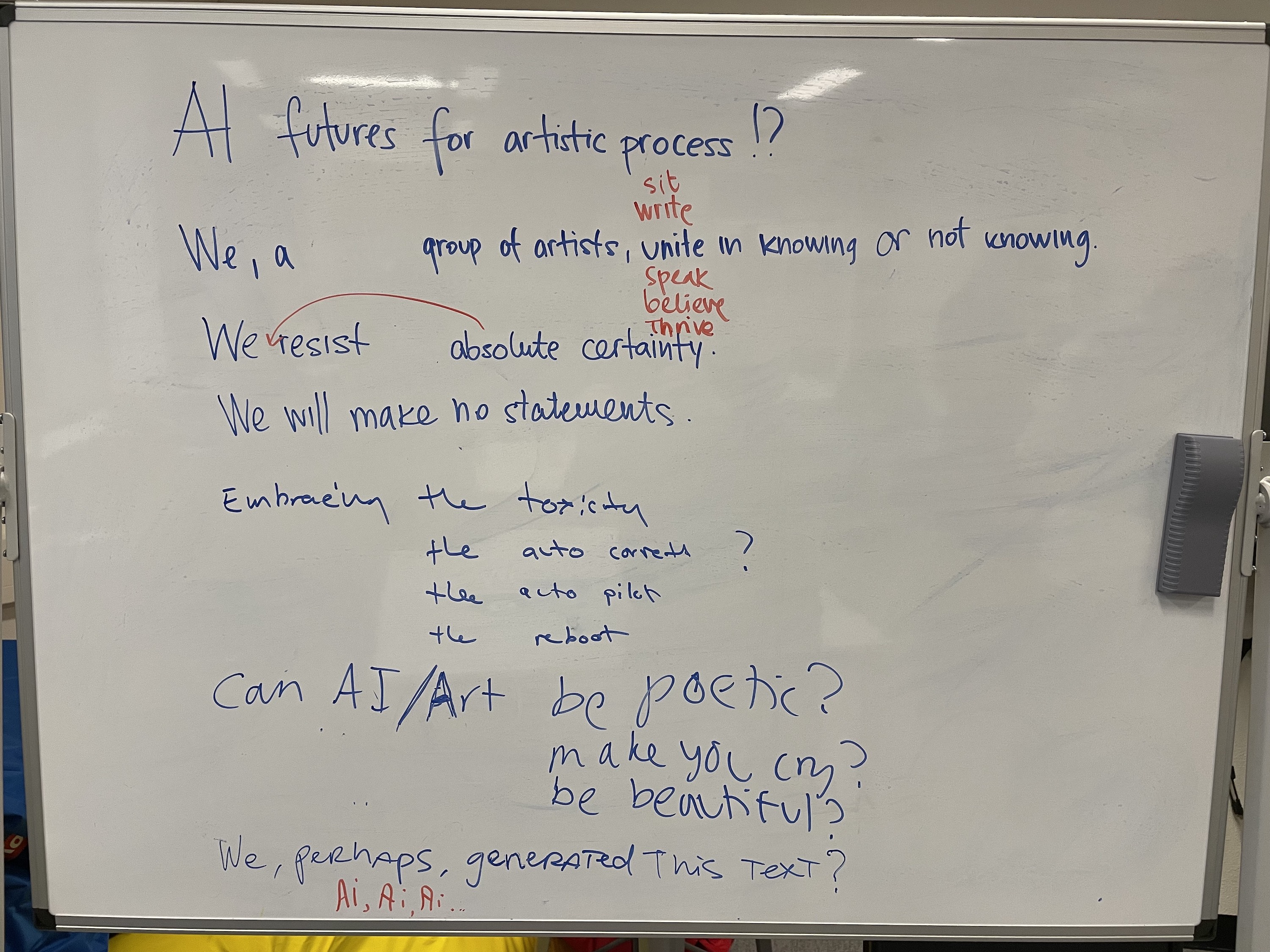Artificial Intelligence (AI) is rapidly becoming enmeshed in our professional and private lives. The ubiquity of this technology raises a host of ethical questions, value clashes, and unforeseen consequences that must be confronted sooner rather than later. One domain in which AI is exerting a growing influence is the arts sector. Developments such as Chat-GPT and DALL-E by OpenAI are exciting in that they present seemingly robust new capabilities in AI and creativity. However, the futures such technologies unlock are also unpredictable. Given the speed with which such technologies are emerging and becoming adopted, the need to engage target audiences to weigh in on possible AI futures in this domain is critical. Artists and other affected parties should have a voice in AI-based innovations. After all, it is in everyone’s interest to ensure that AI innovations are introduced into society in a responsible manner.
To help give artists a voice in the creation and promotion of AI tools, a research project was developed called Artistic Process Futures and AI The project was developed by an interdisciplinary team consisting of Simone Ashby and Alwin de Rooij (New Media Design Programme, Tilburg University), Julian Hanna (Culture studies, Tilburg University), Michelle Kasprzak (Willem de Kooning Academy, Hogeschool Rotterdam), and Bert-Jaap Koops and colleagues (TILT, Tilburg University). The research was generously funded by TSHD Digitalisation of Society seed money grant 2022.
Our initial phase of research consisted of two workshops that took place at the New Media Design Lab at Tilburg University in 2022-2023. During the workshops, we constructed stories about different possible, plausible, and preferable futures in which artistic work might exist.
Stage 1 was a guided brainstorm for ‘prehearsing the future’ and envisioning future scenarios, a method developed by the Brussels-based transdisciplinary collective and ‘Hybrid Reality Lab’, FoAM (fo.am). Participants engaged in: (a) mind mapping artistic process futures; (b) discussing driving forces behind art and AI, and ranking these in terms of their relative importance and uncertainty; (c) selecting critical uncertainties (e.g. artistic authenticity, power relations); and (d) creating starter scenarios offering different visions of artistic process futures.

In Stage 2, participant groups made the scenarios tangible by designing speculative artefacts (i.e., ‘design objects from the future’). Inspired by speculative design methods (e.g., work by Bleecker, Foster, Girardin and Nova, 2022) each group created and presented their speculative artefact and participated in a wider discussion on possible and preferable futures.

During Stage 3, participants co-authored a manifesto that communicates a collective vision of artistic process futures and AI. Given the role of manifestos in gathering a list of demands (or requirements), the idea was for participants to conceive of a lasting record, to be made accessible to a wider public.

The toolkit based on our methodologies will be made public in late 2023. Watch this space!